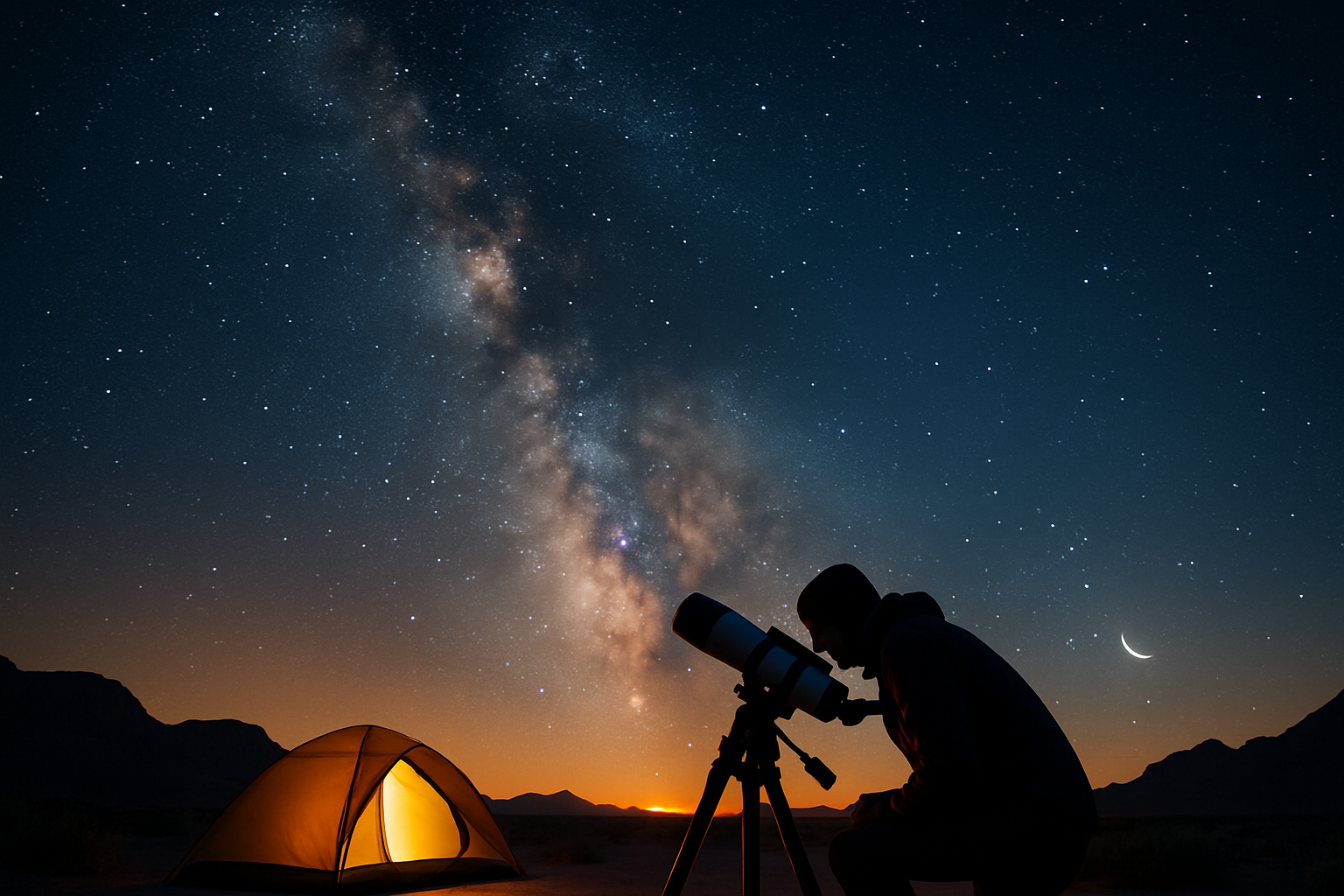Astrotourism: Stargazing Adventures for Modern Travelers
Amidst the bustling world of travel, a celestial trend is emerging, captivating adventurers and dreamers alike. Astrotourism, the art of journeying to witness the wonders of the night sky, is redefining how we experience our planet and beyond. This cosmic pursuit combines the thrill of exploration with the awe-inspiring beauty of the universe, offering a unique perspective on our place in the cosmos. As light pollution dims the stars in urban areas, travelers are seeking out dark sky destinations, eager to reconnect with the ancient art of stargazing.

The rise of astrotourism can be attributed to several factors. Increasing urbanization and light pollution have made stargazing a rarity for many, creating a longing for clear, dark skies. Additionally, advances in astrophotography have made capturing stunning images of the night sky more accessible, fueling interest on social media platforms. The COVID-19 pandemic also played a role, as people sought outdoor activities and connection with nature during lockdowns.
Dark Sky Destinations: A New Travel Frontier
As astrotourism gains traction, destinations are capitalizing on their dark skies. The International Dark-Sky Association (IDA) certifies locations that preserve and protect dark sites through responsible lighting policies and public education. These Dark Sky Places range from remote islands to national parks, offering pristine views of the cosmos.
Notable dark sky destinations include the NamibRand Nature Reserve in Namibia, where the Milky Way casts shadows on the desert sand, and Aoraki Mackenzie International Dark Sky Reserve in New Zealand, home to the world’s largest dark sky reserve. In Europe, the Alqueva Dark Sky Reserve in Portugal offers stargazing boat tours on its lake, combining celestial and terrestrial beauty.
The Astrotourism Experience
Astrotourism experiences vary widely, catering to different interests and expertise levels. For beginners, guided stargazing tours provide an excellent introduction to constellations, planets, and celestial events. These often include the use of telescopes and astronomy binoculars, allowing close-up views of distant galaxies and nebulae.
More immersive experiences include astrophotography workshops, where participants learn to capture stunning images of the night sky. Multi-day astronomy festivals, like the Oregon Star Party in the United States, bring together enthusiasts for lectures, observing sessions, and camaraderie under the stars.
For the ultimate astrotourism adventure, some tour operators offer eclipse chasing trips. These journeys take travelers to prime viewing locations for solar and lunar eclipses, often incorporating local cultural experiences and expert lectures.
The Impact of Astrotourism on Local Communities
Astrotourism is proving to be a boon for rural and remote communities. Many dark sky destinations are located in areas with limited economic opportunities, and the influx of stargazers provides a new revenue stream. Hotels, restaurants, and local guides all benefit from this niche tourism sector.
However, the growth of astrotourism also presents challenges. Increased visitor numbers can strain local infrastructure and potentially impact the very dark skies that attract tourists. Sustainable astrotourism practices, such as limiting group sizes and educating visitors about light pollution, are crucial for preserving these celestial sanctuaries.
The Future of Astrotourism: Beyond Earth’s Atmosphere
As commercial space travel becomes a reality, astrotourism is poised to take a giant leap forward. Companies like SpaceX and Blue Origin are developing plans for orbital hotels and lunar excursions, promising an entirely new level of celestial tourism. While space tourism remains the domain of the ultra-wealthy for now, it’s conceivable that orbiting Earth or walking on the Moon could become bucket list items for future generations of astrotourists.
In the meantime, virtual reality (VR) technology is making the cosmos more accessible. VR planetariums and space exploration simulations offer immersive experiences, allowing users to explore distant galaxies from the comfort of their homes. These technologies serve as gateways, inspiring would-be astrotourists to seek out real-world stargazing adventures.
Celestial Travel Tips for Aspiring Astrotourists
• Plan your trip around lunar cycles; new moons offer the darkest skies for optimal stargazing
• Invest in a red flashlight to preserve your night vision while navigating in the dark
• Download stargazing apps like Stellarium or Sky Map for easy constellation identification
• Consider the season and weather patterns when choosing your destination to maximize clear nights
• Pack layers; nighttime temperatures can drop significantly, even in warm climates
• Bring a comfortable reclining chair or blanket for extended observing sessions
• Allow at least 20 minutes for your eyes to fully adjust to the darkness
• Respect local communities and environments by following Leave No Trace principles
As we look to the stars for our next great adventure, astrotourism offers a profound way to connect with the universe and our place within it. This celestial pursuit not only satisfies our innate curiosity about the cosmos but also fosters a deeper appreciation for our planet’s dark skies. Whether observing the Milky Way from a remote desert or witnessing a total solar eclipse, astrotourism promises transformative experiences that remind us of the vast wonders that await beyond our terrestrial boundaries.





